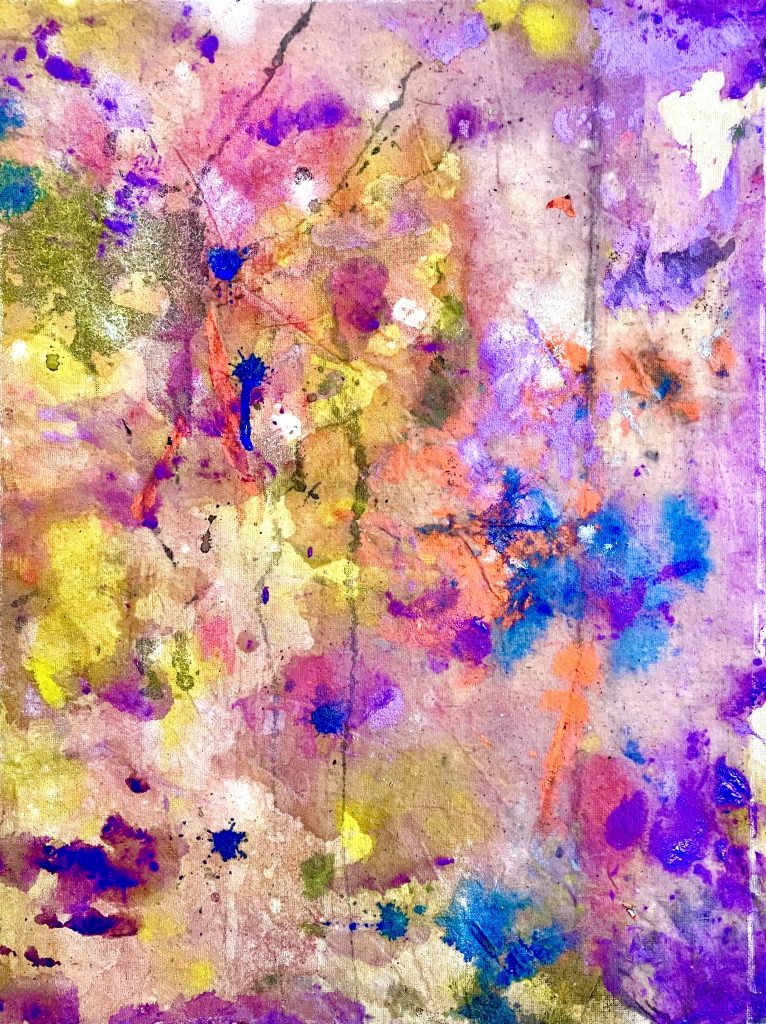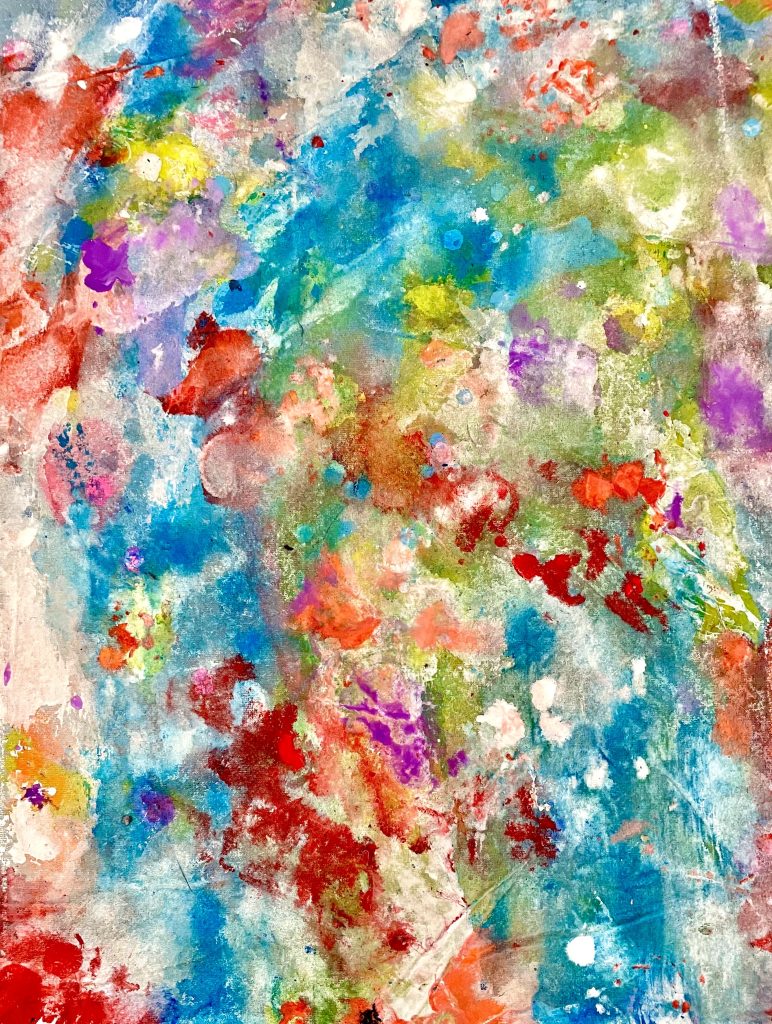
Taken to its logical conclusion the descent from high to low Western Culture begins with the ancient Greek Masters, rushes through the Renaissance, skims Cubism and Pop on the way down, to pass right through Arte Povera and end in a muddy heap of soiled rags on the floor of Art History’s vast studio. Problematic and gross omissions of gender and race aside this simplistic timeline of painting in the West is useful only to identify, with tongue firmly in cheek, the point at which Robert Bradford picks up the mantle with his latest Paint Rag Series.
With scissored raw canvas laid out roughly on the ground Bradford enacts the final coup de grâce to the vaunted canon of art history by picking up these soiled rags and once again applying them to a blank surface. Admittedly, painting has died many deaths, only to be resurrected time and time again to the point where its ultimate demise remains in reasonable doubt. With the Paint Rag Series, we see this contemporary paradox in action. While scraping the barrel of material hierarchy, Bradford focusses in on what counts, that is the experience of colour, mark and magic on the plane in front of us.
It is partly the gap between the privileged heights of blue-chip market forces and the far less glamourous reality for most artists living and working in Britain in 2024, that lends these seemingly pessimistic works their vitality. In other words, the delicate, careful treatment of the painted surface in this series is anathema to the harsh conditions, both literal and theoretical into which they are born. This sense of nurturing the art historical weeds is what gives the work a reconciliatory dynamism, one that lifts the spirits against the run of play.
There is a purposeful display of visual honesty in the work: creases are left un-flattened, spills remain un-mopped and old staples are left stuck to the canvas. This renders the often-mucky process of painting unfiltered and raw, and thus allows the viewer into the everyday bump and grind of the artist’s studio life. You might add fallen cigarette ash, and tea-rings to the mix were the paintings themselves not approached with such ironic veneration. There is an endearing delicacy in the destruction here that lays a solid foundation from which to enjoy the reality of mishaps, mistakes, moments of clarity and moments of acceptance that caricaturise this series.

